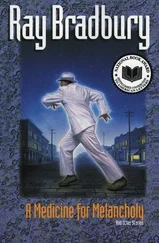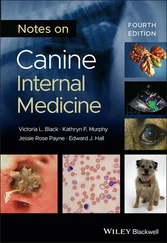I don’t recall my response: I don’t think I even had time to consider the story until evening, when the frantic milling about that makes up an intern’s day had started to wind down. That day, we filled up early — three opportunistic pneumonias from the HIV clinic; a prison inmate transferred from Raleigh with hemoptysis, presumably TB, and a fever-of-unknown-origin.
Keith, the resident, whose job it was to direct me in my labors, felt this was a good day — his work was essentially done by five, as together we wrote admission orders starting the workup of the mysterious fever. He said to me, “I’m heading off to read. Call me if you need anything.”
“But it’s a sign of weakness, right?” I said, remembering Dr. M’s story.
Keith laughed. “Right.” And sauntered off down the hall.
Later, I was on the eighth floor, getting sign-out from one of the interns on the pulmonary service. It was almost seven — this was early in the residency year, and nobody was getting out before dinner. This intern was post-call, red-eyed, and barely making sense. Her sign-out list was eleven patients long. I don’t remember any of it except the one: Mrs. B was listed as a DNR/DNI 47yo WF w/scleroderma  RD . “RD” meant “respiratory distress.” The little arrow meant this was one possible effect of her scleroderma. I had never seen scleroderma before, and what it was, exactly, I could recall only hazily.
RD . “RD” meant “respiratory distress.” The little arrow meant this was one possible effect of her scleroderma. I had never seen scleroderma before, and what it was, exactly, I could recall only hazily.
“She’s a whiner,” the intern explained. “Don’t get too excited about anything she says.” She paused. “I mean, if she looks bad, get a gas or something, but basically she’s a whiner.”
Whiner , I wrote down in the margin of the list.
I sat at the workstation for some time after that, running through lab results on the computer — the scheduled seven P.M. draw was still going on, so there was nothing new on the screen, but it calmed me to go through the exercise.
A nurse stuck her head through the door. “Doctor?”
I was still unused to people calling me that.
“Do you know the lady in twenty-six?”
I fished the sign-out sheets out of my pocket. “What’s her name?” There were too many sheets. The nurse gave me the name and my eye fell on it at the same time. Whiner.
“What’s her problem?”
“She says she’s feeling short of breath.”
“Vitals?” I heard myself ask, marveling at my tone of voice as I did.
The nurse pulled a card out of her pocket and read off a series of numbers. When she was done I realized I hadn’t heard any of them.
The nurse read them again. This time, I wrote them down. Then I spent a minute studying them. She was afebrile, I noted. That was good. Her heart rate was 96, a high number I had no idea how to interpret. Her blood pressure was 152 over 84, another highish set of numbers that told me nothing. Her respiratory rate was 26—also high, and vaguely disquieting. Her O 2sat — the oxygen content of her blood — was 92 percent: low, and in the context of that high respiratory rate not a good sign. The nurse was still looking at me. “I hear she’s a whiner,” I said hopefully. The nurse shrugged. “She asked me to call you.”
The patient was alone in a double room. The light in the room was golden, the late sun of the July evening slanting through the high window. The face that turned to me as I knelt at the bedside was curiously unwrinkled. Her skin had a stretched and polished look, her features strangely immobile, the entire effect disturbingly like a doll’s face. Her chest rose and fell, but her nostrils did not flare. Her mouth was a tight puncture in the center of her face. Only her eyes were mobile, following me as I moved.
“What seems to be the problem?” My voice had taken on a strange quality: tight, almost strangled.
“Are you my doctor?”
“I’m the doctor on call,” I explained.
“I can’t breathe.”
I looked at her for a minute.
“What do you mean?”
“I can’t. catch my breath.”
I thought, but nothing brilliant came to mind. “Are you feeling dizzy?” I asked.
“No. Just. Short of breath.”
I watched, counting. They were quick, shallow breaths, about twenty-eight of them to the minute.
I bent over her and placed my stethoscope on her back. I heard air moving, in and out, and a faint, light rustling, like clothes brushing together in a darkened closet. “I’ll be right back,” I said, and left the room to find her nurse. A few minutes later the nurse reported back to me. “Eighty-nine percent.”
“Is she on any oxygen?” I should know this, I thought. I’d just been looking at her.
The nurse shook her head.
“Put her on two liters and check again.”
Ten minutes later the nurse was back. I was in the doctors’ workroom, looking up “scleroderma” on the Web.
“Ninety-one percent.”
“That’s better,” I said hopefully.
The nurse shook her head. “Not on two liters. Not how hard she’s working.”
“You think she’s working hard?”
The nurse smiled thinly. “Do you want to check a gas, Doctor?”
I smiled back, genuinely relieved that someone was willing to tell me what to do. “That’s a great idea,” I said. “Can you do that?”
“No. But you can. I’ll get the stuff.”
An arterial blood gas is a basic bedside procedure — the kind of thing third-year medical students are encouraged to learn. It involves sticking a needle into an artery and drawing off three or four ccs of blood. The reason a doctor has to draw it is that arteries lie deeper than veins. Even the relatively superficial radial artery — at the wrist, the one you press when checking a pulse — lies a good half-inch deep in most people, and sticking a needle in it stings more than a bit. I was not at that time very skilled at procedures — the arterial blood gas was about the limit of my expertise — but to my relief I had no trouble getting it: bright red blood flashed into the syringe. The patient bore this without a grimace, although by now I wondered if the skin on her face was capable of expression at all. Her eyes regarded the needle in her wrist.
“How are you feeling?”
“A little. Better.”
I pulled the needle out, held a pad of gauze to her wrist.
She subsided into the bed. “But still. Short of breath.”
I watched her. Twenty-six, twenty-eight. Shallow, the muscles at her neck straining with each one.
“I’ll be back in a bit,” I said, rising with the syringe in my hand. “Call if you need anything.” But it’s a sign of weakness, I echoed to myself. I hurried on down the hall, the echo following.
While I waited for the lab to process the gas, I skimmed over fifteen pages about scleroderma, a mysterious, untreatable condition in which the skin and organs stiffen. The most feared complications are cardiac and pulmonary. Some victims develop fibrosis of the heart early in the course of the disease and quickly die, as the accumulation of gristle disrupts the heart’s conduction system. In the lungs, collagen invades the membranes where the blood exchanges oxygen and carbon dioxide with air: the lungs stiffen, thicken, and fail.
It is possible to get an idea of how this would feel. Putting your head in a paper bag is a dim shadow of it; thick quilts piled high come closer. The difference, of course, is that you can’t throw scleroderma off. The bag stays dark; the quilts simply thicken, over years.
The blood gas was not encouraging. The numbers on the screen told me several things. Her blood was acidic. CO 2trapped in her lungs was mixing with water in her blood to make carbonic acid. The acid was chewing up her stores of bicarbonate, which meant that her lungs were getting worse faster than her kidneys could compensate. The really bad news was the amount of oxygen dissolved in her blood, which at a partial pressure of fifty-four millimeters was unusually low, especially for someone getting supplementary O 2. Taken together, these numbers spoke of lungs that were rapidly losing access to the outside air.
Читать дальше

 RD . “RD” meant “respiratory distress.” The little arrow meant this was one possible effect of her scleroderma. I had never seen scleroderma before, and what it was, exactly, I could recall only hazily.
RD . “RD” meant “respiratory distress.” The little arrow meant this was one possible effect of her scleroderma. I had never seen scleroderma before, and what it was, exactly, I could recall only hazily.










